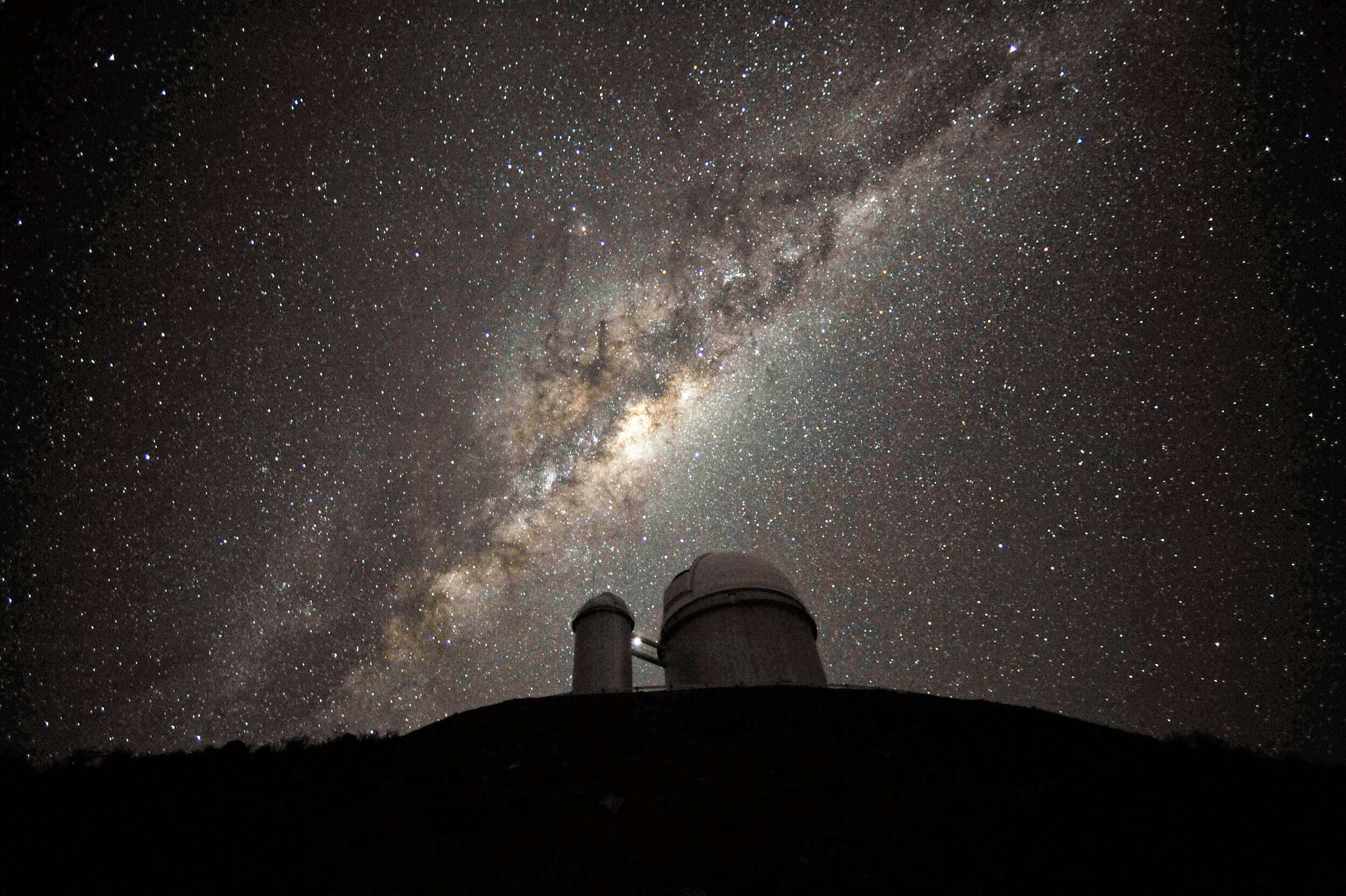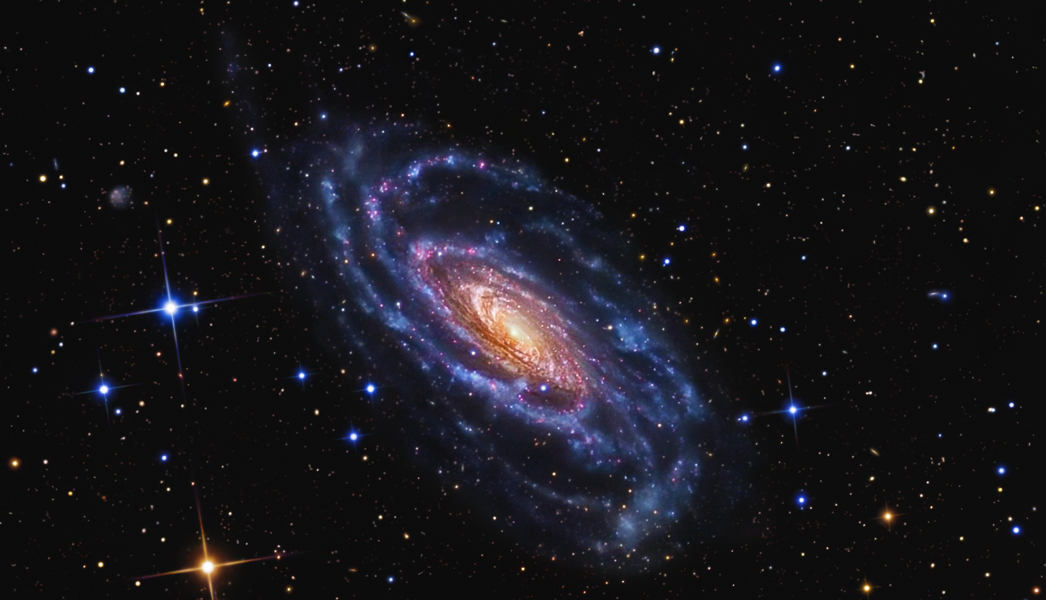The Dark Caustic Theory - Its Stand With Studies In The Milky Way
The Milky Way is made up of sheets of angular momentum dark matter particles that flow in and out. These flows form caustic rings (where the flow density is formally infinite) at their closest approach to the Galactic center. The dark caustic theorygenerates a roughly logarithmic halo near the rings, with large perturbations.
This theory can be used to estimate the rotation curve of the Milky Way. The effects of caustic rings on dwarf galaxy tidal disruption were studied using N-body simulations. Simulations of the tidal disruption of the Sagittarius dwarf galaxy in a caustic ring halo potential match observations of the trailing tidal tail as far as 90 kpc from the Galactic center, but not the leading tidal tail.
The Hierarchical Structure And Caustic Rings
Although the caustic ring model does not account for the effects of hierarchical merging, given the Milky Way's merger history, it is plausible. In the same way that galaxy mergers disrupt star disks and other colliding particle structures, large galaxy mergers will destroy dark matter caustics.
Any dark matter that falls in after the collision, on the other hand, will be preserved on the three-dimensional (3D) sheets in six-dimensional (6D) phase space. Minor mergers will cause the caustics to spread and become fuzzy, but the caustics will sharpen again after the merger event as material from the cold flow fills in the gaps. Minor mergers, such as the one that is currently disrupting the Sagittarius dwarf galaxy due to the Milky Way's tidal forces, would have no effect on the caustics' structure.
Comparing Other Halo Models With The Caustic Ring Halo
The caustic ring halo's acceleration is compared to that of an NFW halo and a spherical log halo. As a function of distance from the Galactic center, the NFW and log halos accelerate. For the caustic ring halo, which is axially symmetric rather than spherically symmetric, we show acceleration in the plane (z = 0) as a function of cylindrical radius ρ and along the axis of symmetry (ρ=0) as a function of z. The acceleration is moving toward the Galactic center in either case. The presence of large acceleration jumps in the Galactic plane at the positions of the caustic rings is an obvious feature.
Caustic Ring Dark Matter Halo
The caustic ring dark matter theory was developed by Pierre Sikivie over the last 20 years. Although Sikivie began with the spherically symmetric self-similar models of Fillmore & Goldreich and Bertschinger, it is important to note that the Sikivie model has evolved to include dark matter particle physics beyond a simple gravitational interaction. As a result of this physics, dark matter flows spin around the stellar disk.
The caustic ring model is compatible with a universe that expands in accordance with the Hubble flow and has power-law density fluctuations that produce individual galaxies' seeds. Because dark matter starts out on these density fluctuations with temperature zero, velocity dispersion at any point in space is 0 at all times. Because dark matter only occupies three dimensions of the six-dimensional phase space as it falls into a galaxy, it collides with discrete flows that only occupy three dimensions of the six-dimensional phase space. The infalling flows, like the particles that make them up, fall in as close as they can to the galaxy center, then fly out until all of the kinetic energy has been converted to gravitational potential energy, then turn around and fall back in.
What Are The Implications Of A Caustic Ring Halo On The Nature Of Dark Matter
The density fluctuations that precede galaxies in the standard caustic ring halo are purposefully spherical. If the dark matter isn't rotating, it falls in along radial orbits, forming a cusp at the center of each galaxy with a density that diverges. Only when the dark matter flows have net rotation do the caustics form tricusp rings in a plane perpendicular to the axis of rotation at the inner turnaround radii. This is a significant difference from CDM simulations, where the dark matter distribution's angular momentum in most simulated galaxies is small. A particular type of dark matter is needed to form the proposed caustic ring halos.
Although dark matter can pick up net rotation through hierarchical merging, the angular momentum of a galaxy as a whole is thought to be caused by a tidal torque from nearby protogalaxies early in its formation, before the galaxy has condensed out of the expansion of the universe. A tidal torque would be unexpected for dark matter, which is typically modeled as a collection of collisionless particles. Axions in a rethermalizing BEC, on the other hand, will enter the lowest energy state compatible with the acquired angular momentum in response to a tidal torque. This is a state of rigid rotation on the turnaround sphere.
Comparing The Caustic Ring Halo With The Milky Way Rotation Curve
The Milky Way Galaxy's potential is boosted by contributions from dark matter halo, baryon disk, and stellar bulge. The NFW halo indicates that the inner Galaxy has a much higher mass. The NFW halo and disk model curves are nearly level. This highlights a problem with using a disk or halo model to fit the rotation curve data. The use of either a caustic ring halo or a log halo to support the maximum disk hypothesis. The assumption is that the disk should contribute the most to the inner Galaxy's rotation curve (50%–90% of total radial force), and that the disk's mass-to-light ratio is unaffected by the radius.
The Sagittarius Dwarf Tidal Stream
Tidal streams are clumps of stars that orbit much larger galaxies after being gravitationally stripped from dwarf galaxies. When a dwarf galaxy's tidal disruption occurs, two streams of stars or "tails" form. The trailing tail follows the leading tail, which follows the bound dwarf galaxy's orbit. The Milky Way's largest and best-studied tidal stream is found in the Sagittarius (Sgr) dwarf galaxy.
By measuring the Milky Way potential, the Sgr stream has been used to constrain the shape of the dark matter halo. It has proven difficult, however, to fit Sgr tidal debris data to halo models. There have been suggestions for spiral, prolate, and oblate ellipsoid models.
People Also Ask
What Is The Effect Of A Dark Matter Caustic Ring On A Satellite?
We discovered that, despite a significant discontinuity in acceleration near a caustic, the gravitational field of the caustic ring has no qualitative impact on the simulation results. The shapes of the orbits and the resulting tidal tails in a caustic ring halo potential differ from those in a spherical log halo potential.
What Happens To The Caustic Ring Halo On The Nature Of Dark Matter?
Since dark matter is typically modeled as collisionless particles, one would not normally expect that the dark matter would be susceptible to a tidal torque. However, axions in a rethermalizing BEC will react to a tidal torque by going to the lowest energy state compatible with the acquired angular momentum.
What Are The N-Body Simulations Of The Sagittarius Dwarf Tidal Stream?
In this section, we will compare the results of N-body simulations of the tidal disruption of the Sgr dwarf galaxy. We use the gyrfalcON tool (Dehnen 2000, 2001, 2002) in the NEMO Stellar Dynamics Toolbox (Teuben 1995) to run the N-body simulations.
Conclusion
The caustic ring halo can reasonably match the known Galactic rotation curve, but there is no evidence of a link between the positions of the caustic rings and oscillations in the observed rotation curve. The values found for the disk mass, scale length, and scale height are similar to those found in other studies that matched Galaxy component models to observations.

